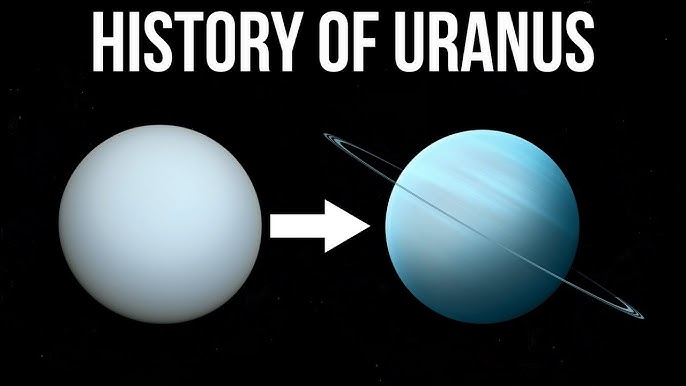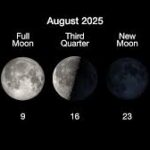Uranus, the seventh planet from the Sun, is one of the most fascinating and enigmatic celestial bodies in our solar system. Discovered in 1781 by astronomer William Herschel, Uranus stands out not just because of its pale blue color or its distant location, but also due to its peculiar characteristics. From its tilted axis to its icy atmosphere, Uranus remains a subject of great scientific curiosity and study.
Basic Facts About Uranus
Before diving into the complexities, here are some essential facts about the Uranus planet:
- Position from the Sun: 7th planet
- Diameter: About 50,724 kilometers (31,518 miles)
- Moons: 27 known moons
- Rings: 13 faint rings
- Orbital Period: 84 Earth years to complete one orbit
- Rotation Period: Approximately 17 hours and 14 minutes
These basic stats already hint at why Uranus is such an extraordinary planet. Its vast size, distance from the Sun, and icy composition classify it as an “ice giant,” along with Neptune.
A Planet on Its Side
While most planets, including Earth, tilt slightly on their axis, Uranus takes this to an entirely new level; it is tilted at about 98 degrees. This means the planet essentially rolls around the Sun on its side.
This unique orientation causes extreme seasonal variations. Scientists believe a massive collision with an Earth-sized object billions of years ago may have knocked Uranus onto its side.
Atmosphere and Composition
The Uranus planet is primarily composed of hydrogen (about 83%) and helium (around 15%), with a small amount of methane gas (2%). It is the methane that gives Uranus its signature pale blue color by absorbing red light and reflecting blue.
Unlike gas giants like Jupiter and Saturn, Uranus contains a larger proportion of ices such as water, ammonia, and methane in its interior. For this reason, it is categorized as an ice giant rather than a gas giant.
Interestingly, despite its distance from the Sun and icy name, Uranus has the coldest atmosphere of any planet in the solar system, with temperatures dropping as low as -224°C (-371°F). This makes it even colder than Neptune, which is farther from the Sun.
Rings and Moons of Uranus
Uranus has a complex ring system, although it’s far less prominent than Saturn’s. There are 13 known rings, which are narrow, dark, and composed mostly of large particles rather than dust.
The 27 moons of Uranus are also unique in their naming. Unlike other planetary moons named after mythological figures, Uranus’ moons are named after characters from the works of William Shakespeare and Alexander Pope. Some of the most well-known include:
- Titania (largest)
- Oberon
- Miranda
- Ariel
- Umbriel
Each of these moons has distinct geological features. For example, Miranda has one of the most varied and extreme landscapes, with huge cliffs, ridges, and valleys suggesting a complex geological past.
Exploration of Uranus
Uranus remains largely unexplored compared to other planets. So far, the only spacecraft to visit Uranus was NASA’s Voyager 2, which flew by the planet in 1986. During its brief encounter, Voyager 2 sent back valuable data about the planet’s atmosphere, magnetic field, and moons.
No other missions have visited Uranus since then, although scientists strongly advocate for a dedicated orbital mission.
Uranus’ Magnetic Field
Another mystery surrounding Uranus is its magnetic field. Unlike Earth’s relatively symmetrical field, Uranus has a highly tilted and off-center magnetic field. It is tilted 59 degrees from the planet’s rotational axis and does not pass through the planet’s center.
This odd magnetic alignment causes the field to vary wildly during a single rotation, making it one of the most unusual magnetic fields in the solar system. Understanding this anomaly may help scientists learn more about planetary magnetic dynamos.
Why Uranus Deserves More Attention
Despite its distance and cold environment, Uranus is critical to understanding how planets form and evolve. Here’s why it’s important:
- Exoplanet Comparison: Many exoplanets discovered in other star systems are similar in size and composition to Uranus. Studying Uranus could provide a template for understanding these distant worlds.
- Planetary Formation: The unusual axial tilt, magnetic field, and internal structure offer clues about catastrophic impacts and planetary formation history.
Future Missions and Scientific Interest
NASA and the European Space Agency (ESA) have both expressed interest in sending a mission to Uranus planet, possibly in the 2030s. A proposed mission would include an orbiter and a probe to dive into the atmosphere.
Such a mission could answer major questions, including:
- What is the structure of Uranus’ core?
- How do its rings and moons interact?
- What is the origin of its magnetic field?
- Could there be subsurface oceans on its moons?
Conclusion
While it may not receive as much attention as Mars or Jupiter, Uranus holds the key to many unanswered questions about our solar system and beyond.
As technology advances and space agencies plan future missions, Uranus may finally get the spotlight it deserves. Exploring this icy giant could unlock secrets not only about its nature but about the broader workings of planetary systems across the universe.



